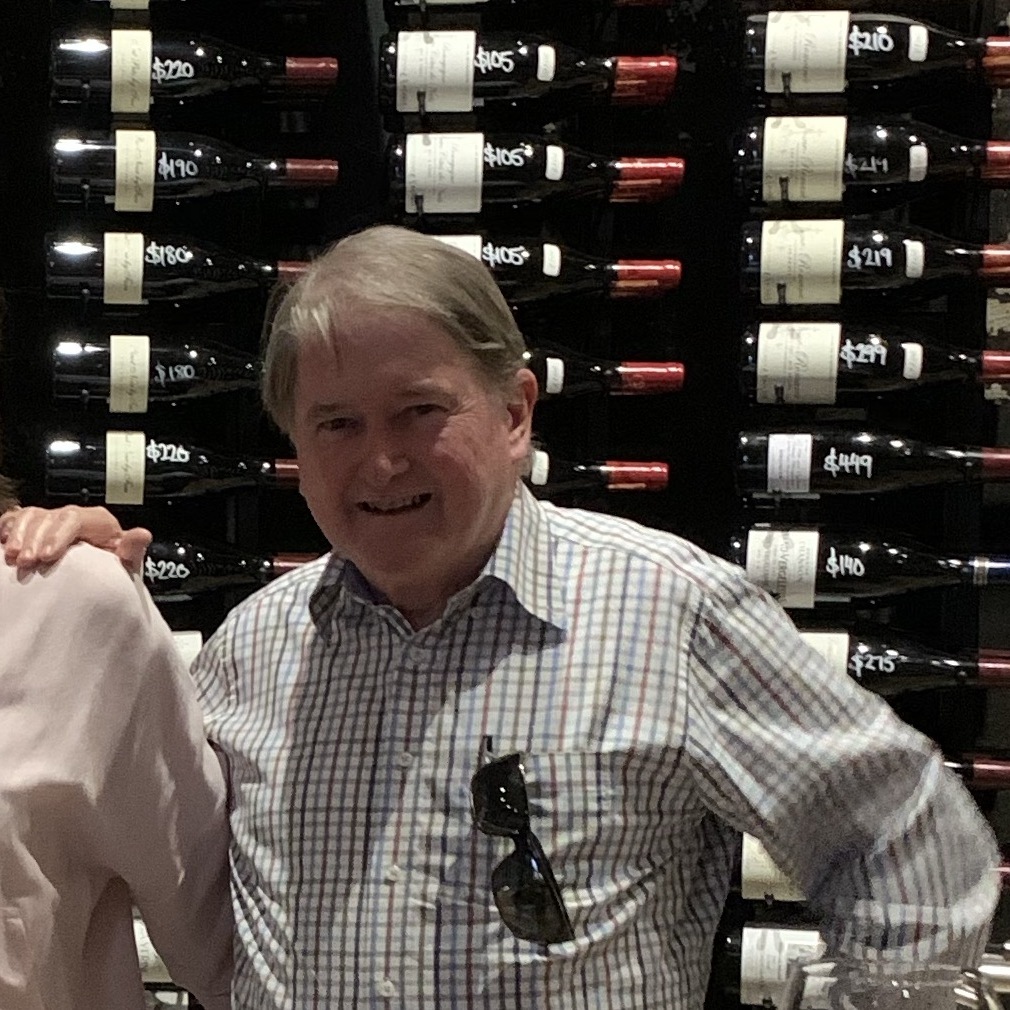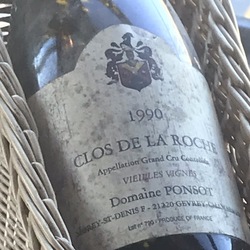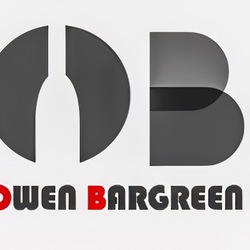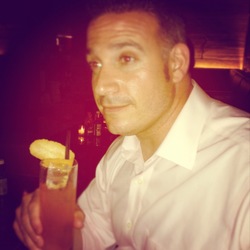Jj De Wet & Son
Alex Foillard
Cote de Brouilly Gamay 2016
Thanksgiving week with my in-laws.
Nose has higher toned blue/red fruits (raspberry, blackberry, under-ripe cherry), dried citrus peel, wet granite and light moist earth.
Palate has bright black cherry, blackberry, blood orange flesh, sweet-roasted red pepper, confectionery sugar and a medium-long finish. Perfect entry to the world.
Debut commercial vintage from a son of one of the Masters of Beaujolais, at long last, Alex Foillard is bringing his wines to the world. Starting with an epic hail vintage, supply was quite limited for much of the North. Luckily Bouilly and Côte de Brouilly had minimal damage. For those in the know, 2016 Burgundy's will be wines for the ages. — 6 years ago

Château Brane-Cantenac
Grand Cru Classé en 1855 Margaux Red Bordeaux Blend 2005
I have a six-pack of this 05. I thought after 10 years in bottle, it would be interesting to check in on its evolution. While tasty, I’ll wait another 8-10 to open another. Even after 2-3 hours in the decanter, it’s still a very young adolescent. On the nose, slightly sour blackberries & dark cherries, dark currants, baked black plum, haunting blue fruits, anise, whiff of spice, steeped tea, dry stones, dry crushed rocks with dry top soil, caramel, vanilla with fresh & dry red florals. The body is thick & full. Tannins are starting to round out. It’s velvety on the palate. The fruits are; bright, fresh & ripe and really show the greatness of the 05 vintage. Dark currants, blackberries, dark cherries, baked black plum, haunting blue fruits, baked strawberries, cherries, raspberries on the long set, dark spice, clay & loamy dry top soil with crushed rocks, dry stones, cigar with ash, graphite, dry stems, slight herbaceous character, mint, used leather, clove, caramel, vanilla, fresh & dry red florals with violets. The round acidity is about perfect. The structure and length are still strong. The balance is in harmony. As for the long finish, it’s lush, ruby, rich and well polished. Photos of; Chateau Brane Cantenac, large wood vats, Henri Lurton and Estate vines. Producer notes and history...Chateau Brane Cantenac began in the early 17th century. At the time, the estate was known as Domaine Guilhem Hosten. Even that far back, wine was produced from the property. In fact, the wine was so highly regarded it was one of the more expensive wines in Bordeaux. It sold for almost as much money as Brane Mouton. This is interesting because of who went on to buy the vineyard in the 1800’s. The Baron of Brane, also known as “Napoleon of the Vineyards”, purchased the Chateau in 1833. At the time of the sale, the estate was called Chateau Gorce-Guy. To get the funds needed to purchase the Margaux vineyard, the Baron sold what is now called Mouton Rothschild, which was at the time of the sale, known as Chateau Brane-Mouton. Not such a good move with hundreds of years in hindsight! In 1838, the Baron renamed property taking his name and the name of the sector where the vineyards were located and called it Chateau Brane Cantenac. The Chateau later passed to the Roy family, who were well-known in the Margaux appellation in those days, as they owned Chateau d’issan. Moving ahead to 1920, the Societe des Grands Crus de France, a group of merchants and growers that owned several chateaux located in the Medoc including; Chateau Margaux, Chateau Giscours, and Chateau Lagrange in St. Julien, purchased Chateau Brane Cantenac. Five years later, M. Recapet and his son-in-law, François Lurton, took over Brane Cantenac along with Chateau Margaux. Lucien Lurton (the son of François Lurton) inherited Brane Cantenac in 1956. Today, the estate is still in the hands of the Lurton family. Brane Cantenac is owned and run by Henri Lurton. After being given the responsibility of managing Brane Cantenac, it was under the direction of Henri Lurton that large portions of the vineyard were replanted. Vine densities were increased, the drainage systems were improved and the plantings were also, slowly changed. The vineyard of Brane Cantenac is planted to 55% Cabernet Sauvignon, 40% Merlot, 4.5% Cabernet Franc and .5% Carmenere. Carmenere was used for the first time in the 2011 vintage. The only other Chateau I know that still uses Carmenere is Clerc Milon. The 75 hectare Left Bank vineyard of Brane Cantenac is essentially unchanged since it earned Second Growth status in the 1855 Classification. At least that is the case with the 45 hectares used to produce the Grand Vin of Brane Cantenac. Those 45 hectares are planted surrounding the Chateau. Those vines are located just in front of the Cantenac plateau and are the best terroir that Brane Cantenac owns. They have other parcels, which are further inland and much of those grapes are placed into their second wine, Le Baron de Brane. Those additional hectares can be divided into 3 main sections. Behind the Chateau, they have 15 hectares of vines on gravel and sand, 10 hectares across the road with sand, gravel and iron and a 13 hectare parcel with gravel called Notton, which is used for their second wine. The vineyard is planted to a vine density that ranges from 6,666 vines per hectare on the plateau and up to 8,000 vines per hectare for the vines located behind chateau, in their sandier soils. The higher levels of vine density are always found in the newer plantings. The terroir of Brane Cantenac consists of deep gravel, sand and clay soil. Experiments in the vineyards are currently looking at becoming more organic in their vineyard management. Today, more than 25% of Brane Cantenac is farmed using organic farming techniques. It is expected that over time, the amount of hectares farmed with organic methods will be increased. Brane Cantenac has gone through 2 relatively recent modernization’s in 1999, when they added began adding the first of their smaller vats to allow for parcel by parcel vinification and then again in 2015 when they completed a much more complete renovation of their cellars and vat rooms. While Brane Cantenac is a traditional producer, they are no stranger to technology as they were one of the first estates to embrace optical grape sorting machines. In very wet vintages, they can also use reverse osmosis. To produce the wine of Chateau Brane Cantenac, the wine is vinified in a combination of temperature controlled, traditional, 22 oak vats, 18 concrete tanks and 20 stainless steel vats that vary in size from 40 hectoliters all the way up to 200 hectoliters, which allows for parcel by parcel vinification. 40% of the fermentation takes place in the oak vats. The oldest vines are vinified in vats that are selected to allow for separate parcel by parcel vinification. The younger vines are vinified more often together in the same vats. However, the Carmenere is entirely micro-vinified, meaning that those grapes were completely vinified in barrel, using micro-vinification techniques. This can also happen because the amount of grapes produced is so small. Some vats can be co-inoculated, meaning they go through alcoholic fermentation and malolactic fermentation simultaneously. At Chateau Brane Cantenac, malolactic fermentation takes place in a combination of French oak tanks and barrels. The wine of Brane Cantenac is aged in an average of 60% new, French oak barrels for 18 months before bottling. The initial 2 months of aging is done with the wine on its lees, which adds more depth to the wine. There second wine is Le Baron de Brane. Le Baron de Brane is not new. In fact, previously, the second wine went under the name of Chateau Notton, which took its name from one of the main parcels where the grapes were planted. During the late 1950’s and into the 1960’s, having a second wine was important as the estate declassified 3 vintages, due to extremely poor, weather conditions in 1956, 1960 and 1963. Production of Chateau Brane Cantenac is about 11,000 cases per year. — 8 years ago

Riverside Vintners
Powell & Son Barossa Valley Shiraz 2019
Big fruit balanced by earthiness. Spicy, substantial. Nose of tar and wet kangaroo. Solid. — 2 years ago
Château Pontet-Canet
Pauillac Red Bordeaux Blend 2010
An awesome vintage. Happy 10th to our family friend’s son! Very dark ruby color with no sign of aging. Started to open up after 2.5-3 hours of decanting. Dark berries, pencil lead, fall soil, wet leaves, black pepper, tobacco. Full body. Well balanced with a long finish. Should age for a long time given the tannin. Very nice — 5 years ago
Joh. Jos. Prüm
Wehlener Sonnenuhr Auslese Riesling 1985


Jean-Jacques Morel
Puligny-Montrachet Chardonnay 2017
I love when Morel is on and boy is this on. Nose is wooly and hickory based. Sweet acacia as well. Lanolin and lemon flesh and gorgeous mineral. Palate rich, energetic and bracing. Compact and deep with crazy linearity and focus. Like a laser. So clean. This needs air as it is JJ Morel but out of the gates it’s wonderful. So juicy and engaging. Amazing sap. Now with air you get that wet earth thing that is so clear. — 2 years ago
Didier Dagueneau
Buisson Renard Pouilly- Fumé Sauvignon Blanc 2015
2015 ‘Buisson Renard’ by Didier Dagueneau, is a spectacular effort. Now headed by Didier’s son, Louis-Benjamin, Dagueneau wines continue to set the standard for the Pouilly-Fume region. The wine shows wonderful flinty and damp earth tones with lemon oil drenched sourdough bread on this marvelous bouquet. The rich, almost unctuous texture to this wine, truly satisfies. Lemon zest, beeswax, ripe pear and starfruit flavors with wet stone and smoky mineral undertones all nicely amalgamate on the palate. Intense and showing beautifully in its youth, this dazzling Sauvignon Blanc will have an exceedingly long life in the cellar. Drink 2019-2033- 94 — 6 years ago

The Mascot
Napa Valley Cabernet Sauvignon 2011












Lyn Farmer
The new 2023 JJ Prüm Wehlener Sonnenuhr Kabinett is medium dry and as juicy as can be. Loads of juicy apple, green pear, white peach, wet stone, acacia and other white flowers. Long on the palate, beautifully balanced between the acidity asks sweetness it’s a lovely Riesling though more expensive than others in the same vineyard. The Minerality is so impressive. — a year ago